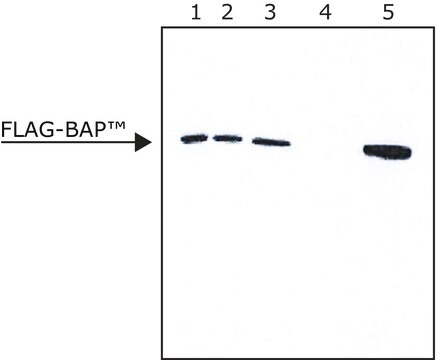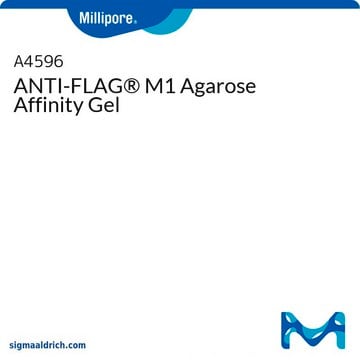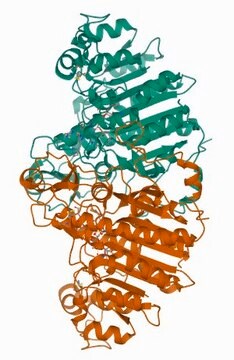CELLMM2
FLAG® M Purification Kit
For Mammalian expression systems.
Synonyme(s) :
Anti-ddddk, Anti-dykddddk
About This Item
Produits recommandés
Niveau de qualité
Technique(s)
protein extraction: suitable
Conditions d'expédition
wet ice
Température de stockage
−20°C
Application
Learn more product details in our FLAG® application portal.
Caractéristiques et avantages
- Includes ready to use reagents, columns, and a detailed protocol for affinity purification of FLAG fusion proteins.
- ANTI-FLAG M2 Affinity Gel allows efficient binding of FLAG fusion proteins without the need for preliminary steps and calibrations.
- Two alternatives for efficient elution conditions (by acidic conditions or by competition with FLAG peptide).
Conditionnement
Autres remarques
Informations légales
Composants de kit également disponibles séparément
- C2978CelLytic™ M, Cell Lysis Reagent, Suitable for Mammalian cell lysis and protein solubilization.FDS
- SAE0194Purified 3xFLAG® peptide, ≥95% (HPLC), lyophilized powderFDS
- A2220ANTI-FLAG® M2 Affinity Gel, purified immunoglobulin, buffered aqueous glycerol solutionFDS
- C2103Chromatography columns, general-purpose, volume 10 mL, Overall H 5 in.FDS
Code de la classe de stockage
10 - Combustible liquids
Certificats d'analyse (COA)
Recherchez un Certificats d'analyse (COA) en saisissant le numéro de lot du produit. Les numéros de lot figurent sur l'étiquette du produit après les mots "Lot" ou "Batch".
Déjà en possession de ce produit ?
Retrouvez la documentation relative aux produits que vous avez récemment achetés dans la Bibliothèque de documents.
Les clients ont également consulté
Contenu apparenté
Techniques, réactifs et protocoles permettant de purifier les protéines recombinantes par différentes méthodes telles que la chromatographie d'échange d'ions, la chromatographie d'exclusion stérique ou la chromatographie d'affinité.
Protein purification techniques, reagents, and protocols for purifying recombinant proteins using methods including, ion-exchange, size-exclusion, and protein affinity chromatography.
Protein expression technologies for expressing recombinant proteins in E. coli, insect, yeast, and mammalian expression systems for fundamental research and the support of therapeutics and vaccine production.
Technologies d'expression protéique permettant d'exprimer des protéines recombinantes dans des systèmes d'expression de type E. coli, cellules d'insectes, levures et cellules de mammifères pour la recherche fondamentale et pour faciliter la production de médicaments et de vaccins.
Notre équipe de scientifiques dispose d'une expérience dans tous les secteurs de la recherche, notamment en sciences de la vie, science des matériaux, synthèse chimique, chromatographie, analyse et dans de nombreux autres domaines..
Contacter notre Service technique













